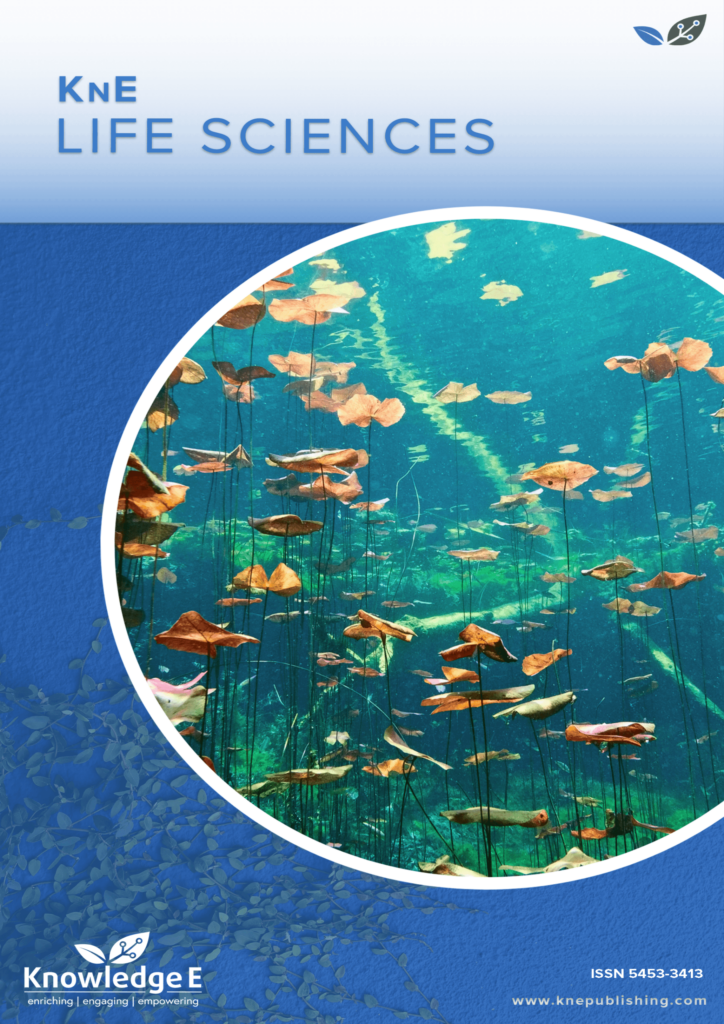
KnE Life Sciences
ISSN: 2413-0877
The latest conference proceedings on life sciences, medicine and pharmacology.
Ecological and Geographical Gis-Analysis of Anomalies in Amphibians of Ukraine
Published date:May 03 2018
Journal Title: KnE Life Sciences
Issue title: The Second International Conference on Amphibian and Reptiles Anomalies and Pathology
Pages:42–48
Authors:
Abstract:
GIS modeling of 138 georeferenced point data of anomalies in amphibians in Ukraine (data from both the literature and personal field surveys) revealed a rather poor, but statistically significant correlation of the numbers of anomalies with the anthropogenic impact measured by the Human Footprint (r=0,268, p=0,0025). We consider that in certain cases the abundance of anomalies in amphibians could be used for purposes of bioindication.
References:
[1] Alford RA, Dixon MP & Pechmann KHJ: Global amphibian population declines. Nature, 2001; 412: 499–500.
[2] Blaustein AR, David BW: The Puzzle of Declining Amphibian Populations. Scientific American, 1995; 272 (4): 52-57.
[3] Blaustein AR, Han BA, Relyea RA, Johnson PT, Buck JC, Gervasi SS, & Kats LB: The complexity of amphibian population declines: understanding the role of cofactors in driving amphibian losses. Annals of the New York Academy of Sciences1223.1; 2011: 108-119.
[4] Borkin LJ, Bezman-Moseyko OS and Litvinchuk SN: Evaluation of animal deformity occurrence in natural populations (an example of amphibians). Trudy Zoologicheskogo instituta RAN, 2012; 316(4): 324–343 [inRussian].
[5] Dubois A: Anomalies and mutations of natural populations of the Rana “esculenta” complex (Amphibia, Anura). Mitteilungen aus dem Zoologischen Museum in Berlin, 1979; 55: 59–87.
[6] Fedoniuk OV: Amphibians and reptiles, their morphological anomalies and nonstandard phenomena as consequence anthropological influences upon forestry ecosystems in Lviv region. In: Interdepartmental Sci.-Tech. Misc.: placeForest, paper and wood industry. 2008; 32: 355-360 [In Ukrainian].
[7] Flyaks NL: The influence of pH on the survival and development of tailless amphibians of Sakhalin. Systematics and ecology of amphibians and reptiles: Proceedings of ZIN AN SSSR, 1986; 157: 152-166 [inRussian].
[8] Flyaks NL and Borkin LJ: Morphological abnormalities and heavy metal concentrations in anurans of contaminated areas, eastern Ukraine. Applied Herpetology,2004; 1: 229–264 [in Russian].
[9] Kovalenko EE: Mass anomalies of the limbs of tailless amphibians. Zhurnal obshchei biologii, 2000; 61(4): 412-427 [in Russian].
[10] Kurtyak FF: Anomalies of development of faintnesses in unisex hybrid populations Pelophylax klepton esculenta (Linnaeus, 1758) (Amphibia, Anura, Ranidae) in the Transcarpathians Lowland. In: Scientific Bulletin of the Uzhgorod University. 2010; Biology; 28: 132-134 [In Ukrainian].
[11] Marushchak OY, Muravynets AA: Morphological abnormalities in natural populations of anurans (Amphibia, Anura) in Ukraine. In: Proceeding of the Ukranian Herpetological society. 4. Kyiv, 2013: 87-94 [In Ukrainian].
[12] Mikitinez GI: Geography occurrence of in populations morphological abnormalities anura of steppe zone Ukraine. In: Proceeding of international conference ”Anomalies and Pathologies of Amphibians and Reptiles: Methodology, Evolutionary Impact, Possibilities for Estimation of Environmental Health” (23-26 September 2013, Yekaterinburg, Russia): 144-149 [in Russian].
[13] Nekrasova OD: Population structure and hybridization of green frogs of the “Rana esculenta” complex from urban territories of Middle Dnieper basin. - Manuscript. Thesis for submitting to the degree of Phd. Speciality: 03.00.02. – Zoology. – Schmalhausen Institute of Zoology, National Academy of Sciences of Ukraine, Kyiv,
2002: 21 [in Russian].
[14] Nekrasova OD, Mezhzherin SV, Morozov-Leonov SYu, Sytnik YuM: A cases of mass polymelia in the lake frog (Rana ridibunda Pall., 1771) from Kyiv. Scientific Bulletin of the Uzhgorod University, (Ser. Biol.), 2007: 92-95 [in Russian].
[15] Nekrasova OD: Classification of Amphibians Anomalies. In: Proceeding of the Ukranian Herpetological society. 1; Kyiv, 2008: 55-58 [in Russian].
[16] Nekrasova OD: Some aspects of anomaly’s manifestation in amphibians coloration. In: Proceeding of international conference ” Anomalies and Pathologies of Amphibians and Reptiles: Methodology, Evolutionary Impact, Possibilities for Estimation of Environmental Health” (23-26 September 2013, Yekaterinburg, Russia): 144-149 [in Russian].
[17] Ouellet M, Bonin J, Rodrigue J, DesGranges JL, Lair S: Hindlimb deformities (ectromelia, ectrodactyly) in free-living anurans from agricultural habitats. J. Wildl Dis; 1997; 33: 95–104.
[18] Rao M, Focht W, Bantle JA: Application of GIS in Environmental Policy Analysis. Oklahoma Politics, 2001; 10: 141-155.
[19] Reeves M, Jensen P, Dolph C, Holyoak M, Trust K: Multiple stressors and the cause of amphibian abnormalities. Ecological Monographs, 2010; 80(3): 423-440.
[20] Sanderson EW, Jaiteh M, Levy MA, Redford KH, Wannebo AV, & Woolmer G: The Human Footprint and the Last of the Wild: The human footprint is a global map of human influence on the land surface, which suggests that human beings are stewards of nature, whether we like it or not. BioScience, 2002; 52(10): 891-904.
[21] Tuanmu M-N and Jetz W: A global, remote sensing-based characterization of terrestrial habitat heterogeneity for biodiversity and ecosystem modeling. Global Ecology and Biogeography. 24(11); November 2015: 1329–1339.
[22] Tytar VM: Analysis of home ranges in species: an approach based on modeling the ecological niche. Vestnik Zoologii. suppl. 2011; 25: 93 [In Ukrainian].
[23] Vershinin VL: Morphological abnormalities in urban amphibians. Ecology. Sverdlovsk, 1989; (3): 58-66 [in Russian].
[24] Zhukova TI, Kubantsev BS, Burlachenko TL: Some reactions of populations of lake frog on pesticide pollution of water reservoirs. In: Proceedings of scientific.Anthropogenic impact on the populations of the animals. Volgograd, 1986: 61-81 [in Russian].